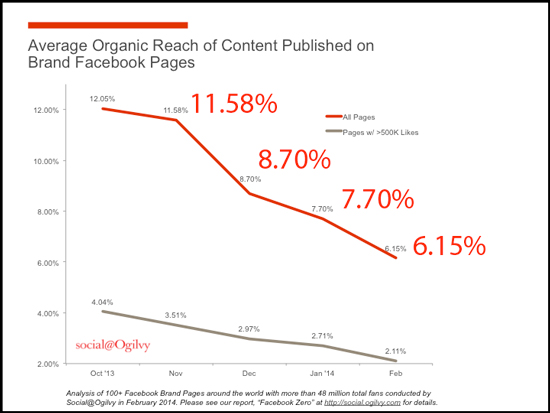Social media continues its reign as a top choice for marketers and businesses looking to reach their target audience in the Information Age. But climbing aboard the social media marketing train may not be as easy as it once was, as many social networks have updated their algorithms to enforce stricter guidelines as to which content gets to the top of a user’s news feed.
Statistics show that in both B2B and B2C sectors, more and more decision makers are millennials. And these digital natives, as they’re often called, are likely to take notice of brands that they can engage with on social media sites like Facebook and Twitter.
That said, if you haven’t hopped on the social media marketing bandwagon yet, then your time is running out. Last year, statistics peg the number of active advertisers on Facebook alone to be around 6 million. And with Facebook’s recent overhaul of their news feed, justifying paid social can get even harder with increased costs and less chances for exposure.
But first, let’s define the two types of marketing you can do on social media: organic and paid. (If you already know this bit, you can skip to the next part.)
What is Organic and Paid Social?
Organic social means using the basic features of any social media platform without paying for anything. It’s organic because the impressions you get for your posts are natural – which means the ones who can see your post are people who follow you and their friends (when your fans share your posts to their own timeline). Examples of organic posts are sharing news and photos, answering questions, and responding to feedback made by your customers on social media.
While organic is synonymous to free, one exception is when you purchase a subscription to use tools such as Buffer or Hootsuite to manage and schedule your social media posts. What these tools do is make it easier for you to plan out your posts in advance, but because it doesn’t push your content to people that are not yet following you, it’s still considered organic.
Paid social, on the other hand, means paying to “boost” your content, which means it will be pushed to a group of audiences under a certain demographic. Often this payment is on a per-click basis, or what is called CPC (cost-per-click) in the online marketing world.
Common platforms include Facebook Ads, Twitter Ads, and LinkedIn Ads and examples of paid social are sponsored posts and ad campaigns that are targeted to, say, people aged 19-50 years old who are self-employed or own a business.
Organic vs. Paid
In a nutshell, organic posts work better in building relationships with your brand’s target audience. Of course, it takes time to build relationships, so the charm of organic reach may only be seen in the long term.
On the other hand, paid social media campaigns have a set time period, so their effects are more instantaneous. The aims of paid social are improving brand awareness, driving conversions, and supporting organic posts by giving them a “boost.”
That said, when a 2016 survey asked more than 300 marketers which they thought was more effective, more than half believed paid was the better one.
And looking at statistics, it may as well be true. Since 2012, organic reach has been on a downward trend when Facebook restricted the organic reach of brand pages to 16%. Social@Ogilvy published a white paper in 2014 predicting “Facebook Zero,” when organic reach of brand pages on Facebook reaches, well, zero.
And with last month’s announcement that Facebook will be showing less branded organic content and doubling down on posts made by people and influencers, organic reach is seeing a slow burn for brands and businesses – while paid is getting even more costly.

(Source)
Despite this downhill trend, Facebook isn’t quite a “paid” platform yet. The same white paper points out one example that showed the power of Facebook fans (organic) as the main driver for obtaining revenue in paid campaigns. In short, without a solid following to begin with, paying to get your posts boosted will have little to no positive carry over to sales.
Let’s say you’re just a few months in with using social media marketing for your business. Since you’ll only have a few followers, you can use boost your posts to get your brand to the right audience, and then be consistent with organic posts to build that relationship and over time turn fans into paying customers.
As with the issue of lower organic reach, it doesn’t diminish the importance of organic posts. Yes, you may have to post less, and yes, you need to stop relying on vanity metrics such as likes and shares. Instead, you need to create content that targets the right metrics like click-through rates, conversions, cost per click, etc. and give unique value that is shareable and appeals to the emotion of your target audience. Once you nail these elements, organic social will be one of your best friends in social media marketing.
Key Takeaways
- Be more selective on what to publish. Free as it may be, the real estate on your social media page is more precious than ever. Before posting anything, check with your team if the content is worthy of being posted. Does it add unique value to your fans? Does it tell an exciting story that’s aligned with your brand? Or are you just going through the motions?
- Diversify; don’t focus on one platform. Facebook may have once been the social network of choice for B2B and B2C marketers alike, but there’s so much untapped potential in other networks like LinkedIn, YouTube, and others. What makes social media marketing exciting is that things are always shifting around. That’s why you have to be on your feet and experiment with as many social networks as possible to determine the combination that works best for your brand.
- Mix organic and paid social strategies. We can talk all day about why organic is better than paid social and vice versa, but the best results come from using a right balance between the two. Keep running controlled experiments to see which metrics gain a significant increase under which circumstances, so you can decide on the right approach for your social media marketing campaigns.
Both organic and paid have their strengths and weaknesses, but a successful social media campaign requires the right balance of both to succeed in the modern age.
Looking to drive targeted traffic to your website? Discover the power of Pay-Per-Click in the Philippines with Spiralytics! Unlock the secrets of maximizing your online presence through Spiralytics’ blog on organic vs. paid social media traffic.
Are you using paid social, organic social, or both? Let us know in the comments!






